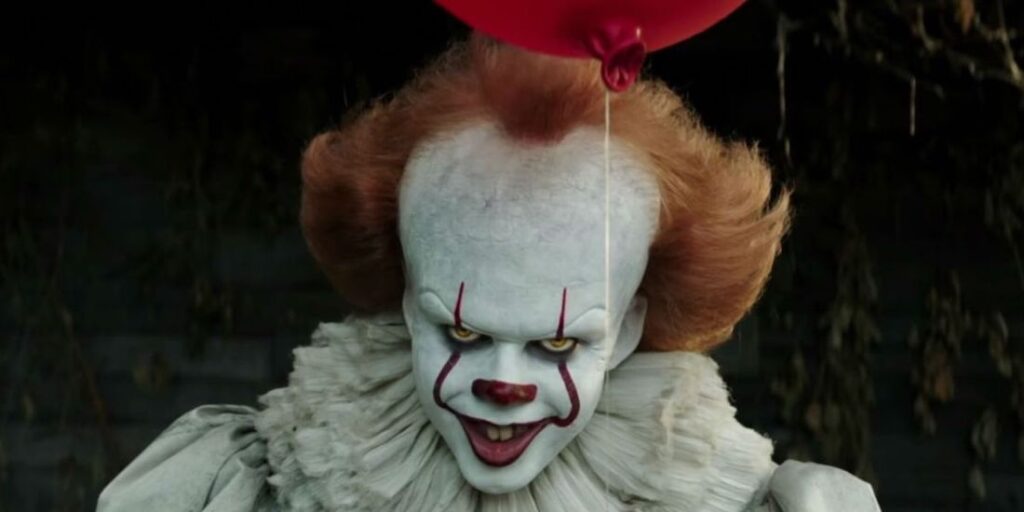Multihyphenate trailblazer Jordan Peele asserts, “The difference between comedy and horror is the music.” Perhaps this is a rhetorical simplification, but coming from a creator who has made such an indelible mark in both genres — it’s an astute point, nonetheless. Peele isn’t the only A-list industry name who feels passionately about this. In an interview with /Film, well-known comedic actor Bill Hader dives into his own take on the link between comedy and horror:
“…I think you’re both trying to get a big reaction out of the audience. So much of horror and comedy is also about pacing and timing and how you play it, how you lay the story out, surprise. So much of it is about surprise. The really good ones, too, they’re very structured and loose at the same time. It’s a weird combination where you have to be kind of intuitive, but then also have deep precision. Whereas like with a drama or something like that, you’re just playing the emotions of those scenes, and it doesn’t have to end. It has a rhythm, but it’s just different.
“But I mean, the biggest thing I think about in comedy and horror is at least for me, you’re thinking of the audience. You’re trying to elicit something out of the audience, a scream or a laugh or both.”
This isn’t a notion that is unique to Hollywood insiders. Academic arguments have been made about this inherent link between humor and fear. A scholarly paper published almost 25 years ago in The Journal of Aesthetics and Art Criticism offers that the literary coupling of horror and comedy is about as old as horror literature, itself.
But what does this mean for writers of horror, comedy, or both? From a personal angle, this knowledge has always yielded something of a Reese’s Cup Effect — “Two great tastes that taste great together!” Horror-comedy is a beloved phenomenon of a genre mashup (with a rich enough tradition to yield its own separate article). But a 50/50 genre split isn’t the only way to take advantage of the bond between the two genres. Adding a small dash of one of these genres has been proven effective in enhancing the flavor of the other.
“You Got Comedy in My Horror!”
The realm of comedy has left its sticky fingerprints all over even the most macabre works of horror. From American Horror Story to IT, clowns have become so prominent a horror trope that most of us seem to have forgotten that they were ever meant to be seen as funny. But beyond that, comedy manages to find its way into the scariest works of horror via dialogue, if not character tropes and types like the aforementioned.
William Friedkin’s 1973 megahit The Exorcist has been hailed as the scariest movie of all time. By an actual study. But one of its most memorable moments boils down to the most crass “Yo’ Momma” joke to hit the screen at the time. Similarly, the cheeky one-liners intrinsic to Wes Craven’s A Nightmare On Elm Street’s brutal villain Freddy Krueger have become a staple of the franchise. In the case of these films, putting humor in the mouths of evil antagonists yields a chilling effect. It’s a technique that demonstrates the villain’s confidence in their control over their target. It’s a psychological taunt that catches their victims off-guard and lets them know that disposing of them will be light work. It lets a character (and the audience) know they are dealing with a whole new level of twisted.
Read More: How William Friedkins ‘The Exorcist’ Became a Haunting Landmark in Horror Film

‘It’ (2017)
“You Got Horror in My Comedy!”
Comedy has taken a shine to parodying some of the most unsettling moments in horror. And this is not just true of TV and film. You can find examples of this on any social media site whenever a new scary title trends. The comedic influencer meme machine did most of the heavy lifting for M3gan (2022, dir. Gerard Johnstone) in terms of marketing.
But on the big screen, comedic films often turn to horror when they need a quick build of tension. Body horror is a common staple in this toolbox. How many times have we seen a funny film where a character gets seriously hurt and pops up with a Cronenbergian injury that’s played for laughs? What makes this technique funny, as in the case of 2019’s Good Boys (dir. Gene Stupnitsky), is that the injury never quite feels as bad as it looks for the affected character. This reinforces the old comedy adage that we can laugh at the pain as long it all works out in the end.
A Perfect Pair
This match-made-in-heck boils down to some crossover elements that have been well-studied. Film scholar Julie Selbo attributes this in part to their shared penchant for the hyperbolic. Both horror and comedy have upended this expectation, however, by exploring subdued and grounded ways to evoke the chills and chuckles they respectively seek. But this will always be true of both; an appeal to our most responsive emotional reactions. Our physical reactions to amusement and fear both live on involuntary hair triggers. This is why we make games out of stopping ourselves from laughing or flinching. An art form that can take us on a rollercoaster featuring both is a commendable balance beam act.
Horror-comedy is a deft artistic maneuver that plays our feelings of fear and folly off of one another. The Evil Dead is one of the most popular horror-comedy movies of all time for its originality and irreverence. Other examples, such as the Scary Movie franchise, take a spoof approach to point out the underlying goofiness of more seriously scary films. But it makes one wonder if there’s a way for horror to normalize the converse and commandeer comedy tropes for its own purposes. What would that look like? Seltzer flowers full of hydrochloric acid? Banana cream pies to the face, except there’s a hidden layer of spiders? (All roads lead to clowns.)
Read More: 25 Films You Have to Watch If You’re Writing a Horror Script
HAVE A GREAT HORROR SCRIPT? GET SCRIPT NOTES FROM THOSE WHO REALLY KNOW HORROR!
The post You Slay Me: The Delicious Marriage Between Horror and Comedy appeared first on ScreenCraft.
Go to Source
Author: Chris Courtney Martin


